Bridging
We are no longer building saddle trees, but we have two videos about how Western saddles fit horses available on our westernsaddlefit.com website.
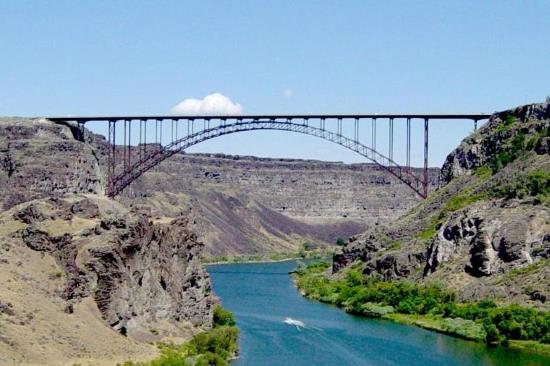
This is a bridge. It contacts at both ends and has lots of empty space underneath it.
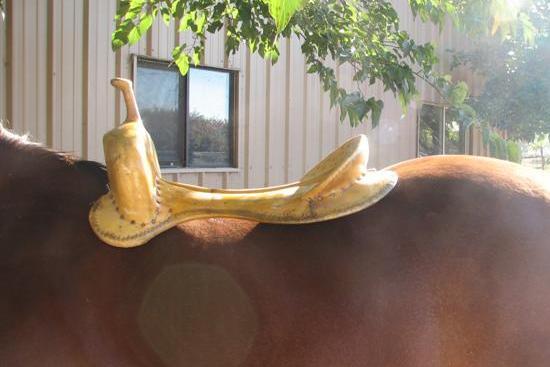
This is a badly bridging saddle tree. It contacts on both ends and has lots of empty space underneath it as well.
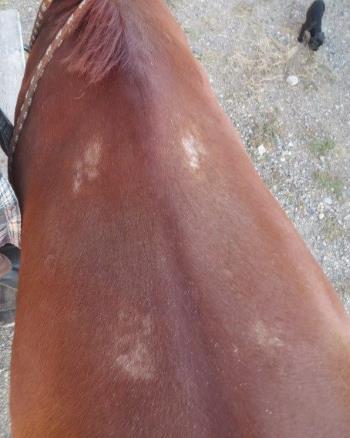
This is the effect of a bridging saddle. You can see the white marks front and back as a result of high pressure areas under the saddle. I don’t think I have seen white marks like this at the back of a saddle before other than from rub marks, and then it is generally on pack horses.
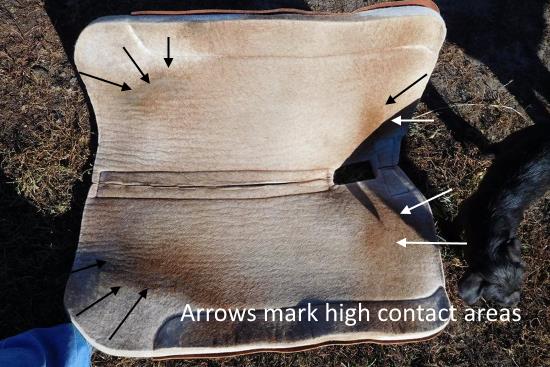
Here is a pad that was used under this saddle. The owner was trying to pad up to protect the horse – thus the thick pad. You can see from the hair and dirt where the tree is contacting the horse. Front and especially at the back, with little to maybe no contact in the center of the bar.
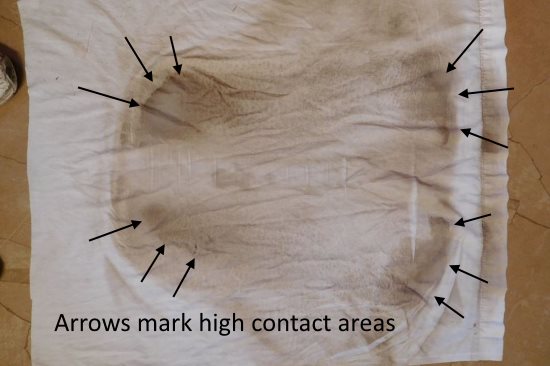
The owner did a “white sheet” test as well – put a white sheet under the saddle and pad and ride a while. The dirt pattern you find on the sheet tells you a lot about where the saddle contacts. Again, you see contact front and back, but especially high contact at the back. (It also shows more contact on the back of the right bar, which fits with how the saddle was worn – but that is another problem relating to unevenness somewhere. The bridging just shows it up more.)
So why does this happen? It is a mismatch between the horse and the tree. The bars are too flat for the horse, or, conversely, the horse has more rock in their back than the rock in the bars. In the above tree picture, the horse had a fair amount of rock in their back, but that was also an old cutting tree that would likely bridge on a mule. Those bars are incredibly flat – no rock at all to them. Why? At that point the cutters were asking for two things – a very flat seat, and very thin bars that put you close to the horse. If the top is flat and you can’t make the bars thicker anywhere, what does that do to the bottom of the bars? You got it! They have to be flat too. This tree demonstrates what can (and often does) happen when the request of the rider is followed without thinking through the whole effect on the horse. Fortunately, this extreme a tree is no longer the norm.
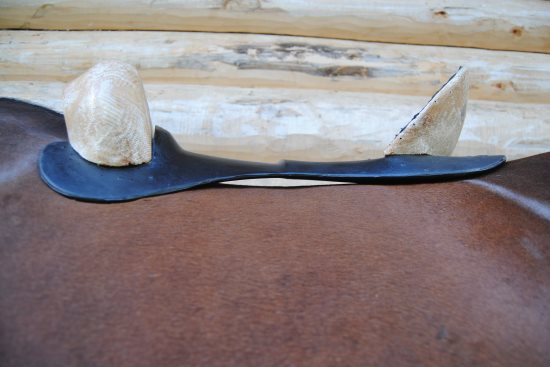
Both the first tree and the saddle issues pictured show severe bridging. But bridging can happen with less of a gap, or even a gap that is hard to see. And of course, you can’t see it with a finished saddle because you have a saddle in the way. So how do you know if your saddle is bridging? Practically, you have to feel for it.
Put your saddle bare on the horse, not cinched up. Make sure it is in the correct position, with the front of the bar right behind the shoulder blade of the horse. (Feel for both of them to know you have it right.) Then, with your palm against the horse, slide your hand under the bar from front to back. Yes, it is a bit awkward and you have to get the fender over your arm, but you’ll figure it out. What you are feeling for is the contact of the saddle against your hand. Is it even all the way along the bar? Are there any high pressure areas or areas where you have less pressure or lose contact all together? If so, those are problems.
If you lose contact, or have less contact, under the center of the bar, your saddle is bridging. (If you can wiggle your fingers freely, it is bridging badly!) That is often easier to notice than if you have high pressure under the ends of the bars, though you can feel that too if it is severe enough. (Note, you can also feel things like the back of the saddle lifting off your horse, or that the bar angle is not matching the horse because there is no contact or, conversely, high pressure at either the top or the bottom of the bar with the other edge lifting off.)
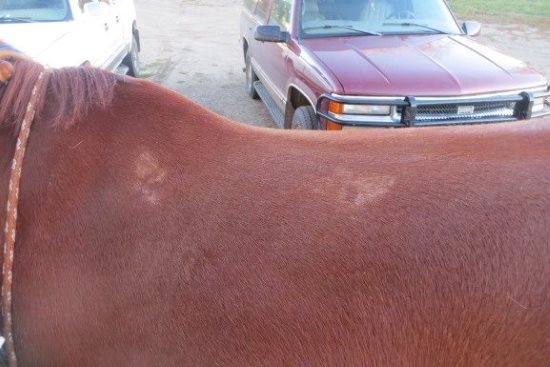
So, is this a problem? Well, the white hairs tell you it must be. But even without white hairs, sore horses can result from the high pressures under bar ends that bridge on a horse. Often it is the loin of the horse that is sore but that may be hard to detect if you don’t know what you are looking for. Does your horse react at all as you brush that area, moving around a little or even showing other signs like putting his ears back or making a “grumpy face” by tightening lips, etc.? Does he flinch if you run your hand over his loin with a bit of pressure? A lot of horses are sore and the riders don’t know it. (The horse in these pictures has apparently never shown obvious soreness to the rider.)
What about the idea that you want a small bridge for the horse to round into? Well, research shows that horses sag under weight, so even when they do “round up”, they aren’t starting from what you see when they are standing there bare. They have a lot more “rock” in their back when you sit on them than when you don’t. (If you doubt that, see what happens to the angle of the horse’s topline behind the saddle when someone gets off. Watch how much it straightens.) So a tree that totally matches the horse bare will be bridging, at least somewhat, under weight.
The idea of the horse “rounding up” is often demonstrated by people making their horse do a “belly lift” – tickling or poking lightly under the belly to get the horse to tighten the abdominal muscles which lifts the back up. But watch the back when it lifts. Does it come up in a short area just underneath the saddle to fill in a bridge? Or does the whole back lift up? And if the whole back lifts – which it does – it lifts the whole saddle up, bridge and all. Yes, it may fill in a bit, but not enough to fill a bridge you can actually see or feel on an unweighted horse, even if the horse didn’t sag under a rider – which it does.
So no, you don’t want a bridge ,even a slight one, under your saddle. You want the ends of the bars to lift off a bit, but not too much, to avoid high pressure areas at the bar tips. Because while bridges are great for getting you across canyons with comparatively little effort, they are a pain (literally) when it comes to saddles and horses…
